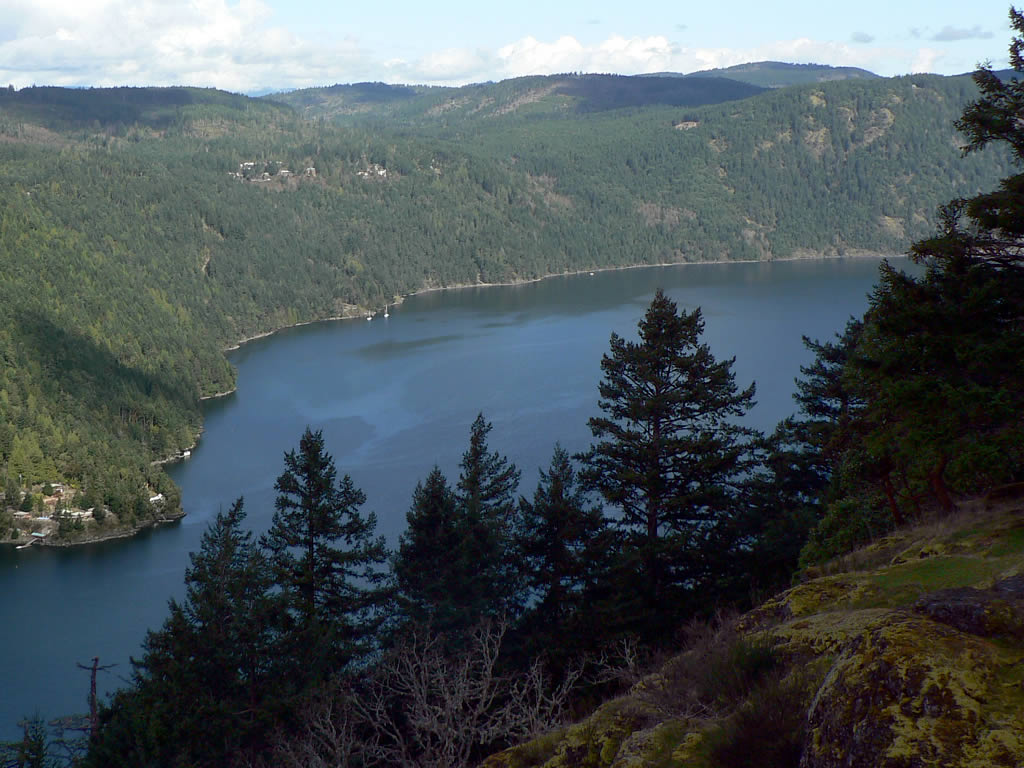50-years of data from a 'living oxygen minimum' lab could help predict the oceans' future
November 2, 2017

November 2, 2017

Canadian and US Department of Energy researchers have released 50 years’ worth of data chronicling the deoxygenating cycles of a fjord off Canada’s west coast, and detailing the response of the microbial communities inhabiting the fjord.
The mass of data, collected in two new Nature family papers, could help scientists better predict the impact of human activities and ocean deoxygenation on marine environments. Currently, oxygen minimum zones (OMZs) constitute up to 7 percent of global ocean volume. Continued expansion of OMZs in the northeastern subarctic Pacific has the potential to transport oxygen-depleted waters into coastal regions, adversely affecting nutrient cycles and fisheries productivity.
“We live on an ocean-dominated planet, and the ocean's cellular life is in turn dominated by microbial communities that form interaction networks which are both resilient and responsive to environmental perturbation,” said University of British Columbia microbiologist Steven Hallam.
“These microbial networks drive nutrient and energy conversion processes responsible for essential ecosystem functions and services.”
The research is novel in the size and scope of sampling as well as the volume of data collected, according to study co-author Angela Norbeck, scientist at the Environmental Molecular Sciences Laboratory, a Department of Energy Office of Science User Facility at Pacific Northwest National Laboratory (PNNL).
“This research can help to predict the changes in the ecosystem when surface waters are warmed, the effects of coastline development on an enclosed water basin, and provide insight regarding carbon cycling and adaptation mechanisms of marine organisms.”
In the pair of Nature Scientific Data studies, a multi-institutional team of researchers led by Hallam addressed these issues by presenting paired geochemical and multi-omic sequence (DNA, RNA and protein) information collected from time-series monitoring in a model ecosystem to study microbial community responses to ocean deoxygenation.
In one of the studies, the researchers present a historical dataset of oxygen concentrations spanning 50 years, as well as monthly geochemical time-series observations from 2006 to 2014 in Saanich Inlet, a fjord on the coast of Vancouver Island, British Columbia, Canada, that undergoes recurring seasonal deoxygenating cycles.
In the second study, the researchers present six years of time-resolved multi-omic observations in Saanich Inlet. “These data sets, in combination with the geochemical compendium, comprise a unique time-resolved framework for reconstructing microbial community metabolism along defined geochemical gradients and promoting the development of models to predict microbial community responses to ocean deoxygenation,” Hallam said.
“These observations take on immediate significance as we consider the potential impacts of OMZ expansion on marine resources and our climate system,” says Hallam. “These ecological impacts represent a recurring theme throughout the global ocean that transcends the anthropogenic boundaries of single nations or states.”
We honour xwməθkwəy̓ əm (Musqueam) on whose ancestral, unceded territory UBC Vancouver is situated. UBC Science is committed to building meaningful relationships with Indigenous peoples so we can advance Reconciliation and ensure traditional ways of knowing enrich our teaching and research.
Learn more: Musqueam First Nation